Chesapeake, VA Pollen and Allergy Report for Summer 2023
Pollen Allergy Trends in Chesapeake, VA
When is pollen lowest in Chesapeake, VA?

February
Lowest month total PPM
Avg. PPM
When is pollen highest in Chesapeake, VA?

April
Highest month total PPM
Avg. PPM
How does pollen in Chesapeake, VA compare to Virginia?
Chesapeake has a lower average PPM than the state of Virginia.
Chesapeake yearly avg PPM:
Virginia yearly avg PPM:
How does pollen in Chesapeake, VA compare to the USA?
Chesapeake has a higher average PPM than the USA.
Chesapeake yearly avg PPM:
USA yearly avg PPM:
Is pollen worse this year in Chesapeake, VA?
Spring 2023 was worse than spring 2022.
Spring 2023 PPM:
Spring 2022 PPM:
Average PPM in Chesapeake, VA
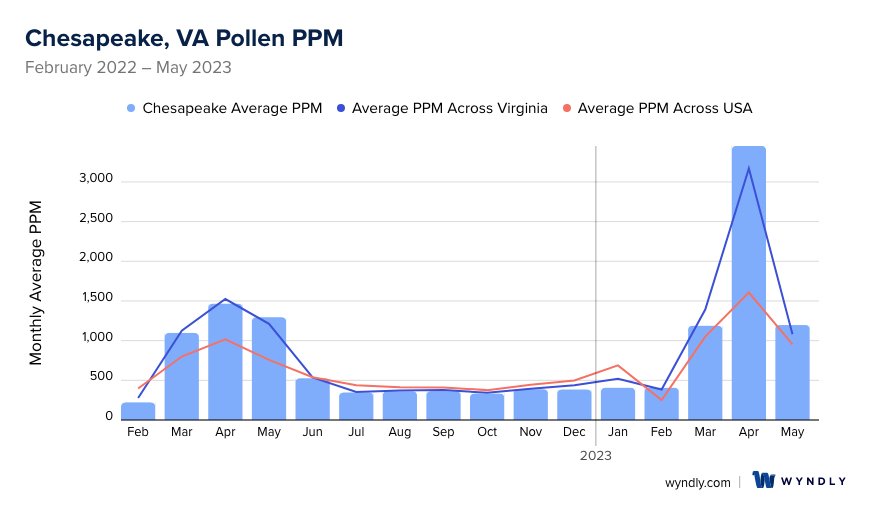
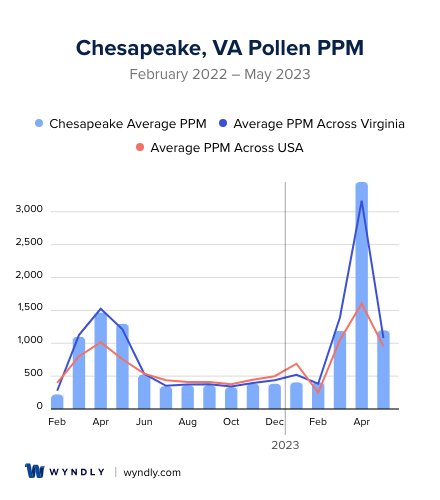
Chesapeake, VA Pollen and Allergy Breakdown by Month
Grass
When is grass pollen highest in Chesapeake, VA?
April has the highest grass pollen in Chesapeake, VA with an average PPM of
When is grass pollen lowest in Chesapeake, VA?
December has the lowest grass pollen in Chesapeake, VA with an average PPM of
Tree
When is tree pollen highest in Chesapeake, VA?
April has the highest tree pollen in Chesapeake, VA with an average PPM of
When is tree pollen lowest in Chesapeake, VA?
October has the lowest tree pollen in Chesapeake, VA with an average PPM of
Weed
When is weed pollen highest in Chesapeake, VA?
April has the highest weed pollen in Chesapeake, VA with an average PPM of
When is weed pollen lowest in Chesapeake, VA?
February has the lowest weed pollen in Chesapeake, VA with an average PPM of
Chesapeake, VA Pollen Monthly Breakdown by Pollen Type
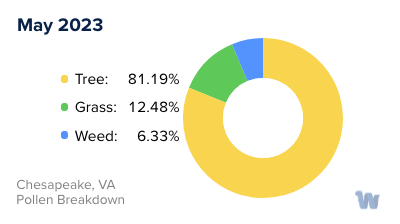
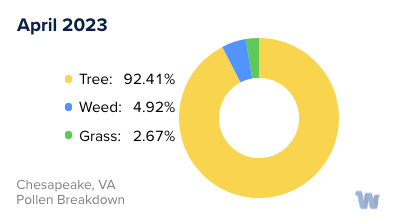
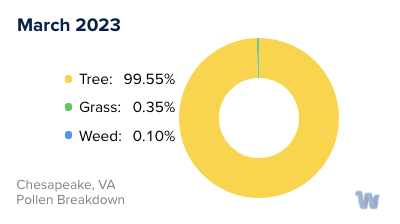
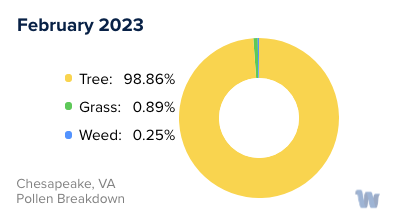
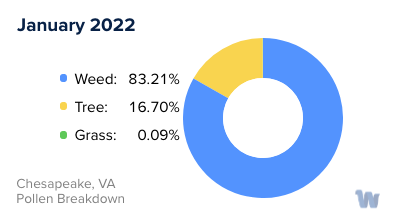
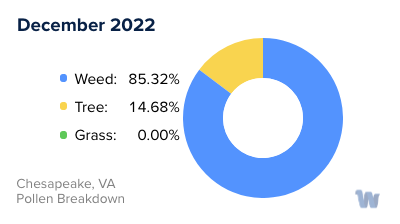

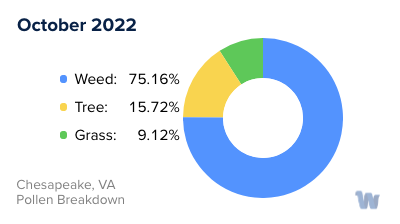

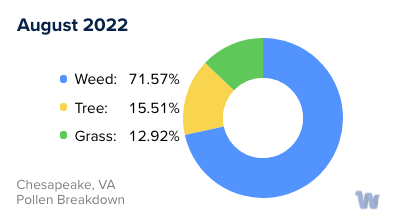
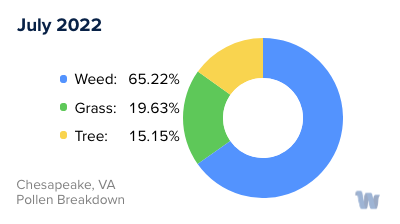
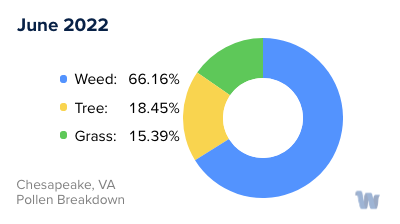
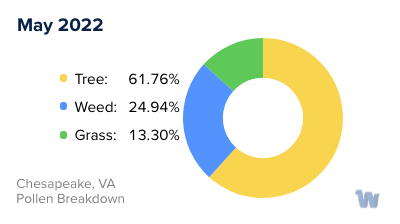
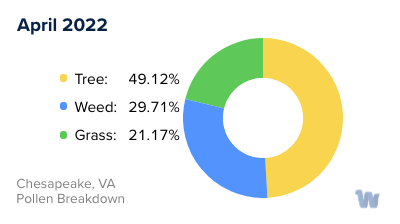
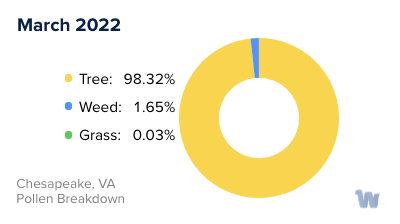
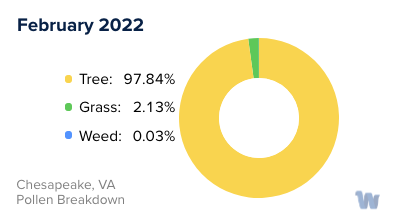
Pollen and Hay Fever in Chesapeake, VA
Living in Chesapeake, Virginia, means enjoying the breathtaking beauty of nature, from its vibrant fall colors to its delightful spring blooms. However, for individuals susceptible to pollen allergies, these seasonal transformations might carry a less welcome change: the onset of hay fever.
Hay fever, also known as allergic rhinitis, is an immune response triggered by exposure to airborne pollen. In Chesapeake, this pollen often originates from trees, grasses, and weeds, each with their own distinctive blooming seasons.
Spring is a beautiful time in Chesapeake, but it's also when tree pollen is most prevalent. Local species like oak, cedar, and pine trees release large amounts of pollen into the air, blanketing the city in a fine yellow dust. Although this pollen can cause hay fever symptoms, many residents agree that it's a small price to pay for the breathtaking beauty of the city's springtime bloom.
As we transition into the warm summer months, grass pollen takes center stage. Chesapeake's green landscapes, adorned with Bermuda grass and ryegrass, may look inviting, but they release pollen that can exacerbate hay fever symptoms for susceptible individuals.
The late summer and fall are no reprieve for those with pollen allergies, as this is when weed pollen, especially from plants like ragweed, is at its peak. Ragweed is particularly hardy and can thrive in a variety of conditions, making it a persistent source of pollen through the autumn months.
One of the unique challenges of living in Chesapeake is the city's proximity to water, which can lead to higher humidity levels. This humidity can cause pollen to burst into smaller particles, making them easier to inhale and potentially worsening allergic reactions.
In conclusion, while Chesapeake's changing seasons bring a dynamic beauty, they also bring various types of pollen, each with their own unique impact on the city's residents. Understanding these patterns can be crucial for those living with hay fever in this beautiful city, helping them to anticipate and manage their symptoms throughout the year.

